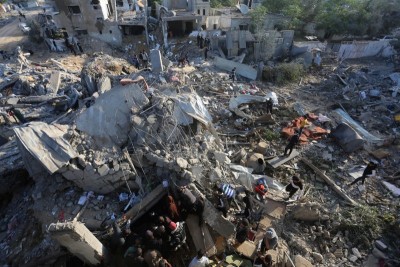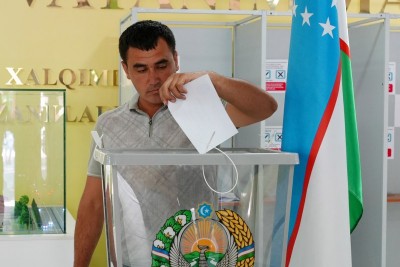
UN launches innovative plan to significantly cut new HIV infections
As part of global efforts to end AIDS as a public health threat, the Joint UN Programme on HIV/AIDS (UNAIDS), the UN Population Fund (UNFPA) and other partners launched on Tuesday the HIV prevention 2020 road map at the first meeting of the Global HIV Prevention Coalition to reduce new HIV infections by 75 per cent by 2020.
“Scaling up treatment alone will not end AIDS,” said Michel Sidibé, Executive Director of UNAIDS, in a statement.
“We need more energy and action put into HIV prevention – stronger leadership, increased investment and community engagement to ensure that everyone, particularly people at higher risk of HIV, can protect themselves against the virus,” he added.
While new HIV infections among children have fallen by 47 per cent since 2010, new HIV infections among adults have declined by only 11 per cent.
In 2016, in the UN Political Declaration on Ending AIDS , countries committed to reduce new HIV infections by 75 per cent – from 2.2 million in 2010 to 500,000 in 2020. The new road map will fast-track countries to achieve this target.
“In many places, lack of access to education, lack of agency and lack of autonomy over their own bodies keep adolescent girls from claiming their human rights,” UNFPA Executive Director Dr. Natalia Kanem added.
“And the poorest girls have the least power to decide whether, when or whom to marry and whether, when or how often to become pregnant. This lack of power makes each one of these girls extremely vulnerable to HIV infection, sexually transmitted infections and unintended pregnancy,” underscored Dr. Kanem.
The HIV prevention 2020 road map contains a 10-point action plan that lays out immediate, concrete steps for countries to accelerate progress, such as conducting up-to-date analysis to assess where maximum impact opportunities lie; developing guidance to identify gaps and actions for rapid scale-up; and addressing legal and policy barriers to reach the people most affected by HIV, including young people and key populations.
It identifies factors that have hindered progress, including political leadership gaps, punitive laws and a lack of HIV prevention services in humanitarian settings, and highlights the importance of community engagement to advocate for service delivery and accountability.
“UNAIDS is urging commitment and leadership for measurable results,” said Sidibé. “Leadership to address sensitive political issues and leadership in mobilizing adequate funding of HIV prevention programmes.”
Cutting new infections by 75 per cent will require a focus on HIV prevention, combined with scaled-up HIV testing and treatment. A location-population-based method for efficient planning and programming along with a people-centred approach for those at higher HIV risk will be critical.
Concerted efforts will be needed, including to reach adolescent girls, young women and their male partners; to increase the availability and uptake of condoms; and to ensure that preventative medicines are available to people at higher risk of HIV.
The road map encourages countries to develop a 100-day plan for immediate actions, including setting national targets, reviewing progress made, reassessing national prevention programmes and taking immediate remedial action.
Photo: UNICEF/HIVA201500101/
Support Our Journalism
We cannot do without you.. your contribution supports unbiased journalism
IBNS is not driven by any ism- not wokeism, not racism, not skewed secularism, not hyper right-wing or left liberal ideals, nor by any hardline religious beliefs or hyper nationalism. We want to serve you good old objective news, as they are. We do not judge or preach. We let people decide for themselves. We only try to present factual and well-sourced news.







